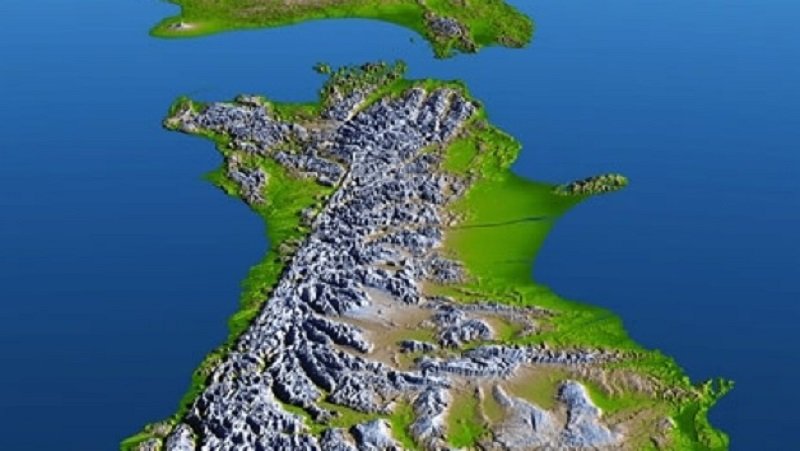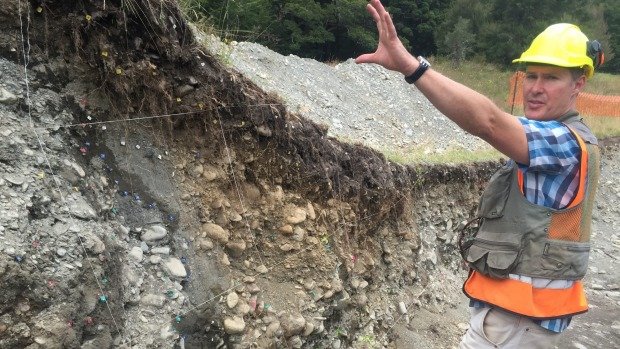
In the past 25 million years, the two sides of the South Island have shifted more than 700 kilometres relative to each other along the Alpine Fault. That is 250km more than previously thought.
The full extent of the movement was masked because the rocks first moved 250km in one direction, then went back the other way - retracing the first 250km and adding a further 450km.
GNS Science earthquake geologist Robert Langridge has been studying why the Alpine Fault is so susceptible to earthquakes - it's since been discovered that it may be the world's fastest-moving known fault line.
The extent of the movement was worked out by researchers from Victoria University and GNS Science, with the findings published in the American Geophysical Union journal G-Cubed.

The researchers made the discovery by looking at geological maps together with studies of the direction of magnetisation in the rocks.
The finding underscored the fact the Alpine Fault was the big seismic hazard in the South Island and had been for a "very, very long time", Lamb said.

The next largest known fault displacement on land was on the Altyn Tagh Fault in Tibet, with a total movement of about 475km.
The new theory about the Alpine Fault was a major shift in thinking and the researchers had needed to provide convincing arguments to get it published.

His advantage was that coming from the UK he wasn't wedded to a particular way of thinking about it.
"We put together this team of people who came at it from lots of different directions to make sure this was right, that we hadn't made some terrible mistake and missed something."
The idea was exciting but it was followed by a large amount of work. "You spend a lot of time checking. You have to go through an enormous amount of information to look at what other people have discovered. You do a lot of testing. In you mind you play devil's advocate," Lamb said.
"It will be interesting to see what the reception is."
The Alpine Fault started as part of the break-up of the supercontinent Gondwana, with New Zealand starting to drift away from Antarctica about 80 million years ago.
That resulted in about 250km of movement along the Alpine Fault but in the opposite direction to the way the fault is moving today. Then "nothing" happened for tens of millions of years, Lamb said.
About 25 million years ago a new plate boundary formed and the Pacific Plate and Australian Plate started moving relative to each other "in a big way".
"That's the situation today. You have the Alpine Fault breaking up this fragment of continent that split away from Gondwana," Lamb said.
It had been thought movement along the Alpine Fault was getting faster. "Basically what we showed was that from the moment the Alpine Fault started to move in the direction it's moving today it more or less moved at the same rate." That was an average speed of about 3cm a year.




Reader Comments
to our Newsletter